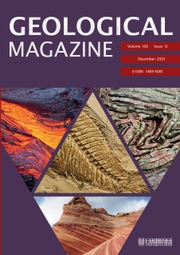Article contents
III.—Notes on the Comparative Structure of Surfaces produced by Subaërial and Marine Denudation
Published online by Cambridge University Press: 01 May 2009
Extract
The article by Mr. Mackintosh on “The Cliffs, Gorges, and Valleys of Wales,” in the September number of the Geological Magazine, raises so many questions in opposition to the views I endeavoured to support in the previous number, that I venture to offer a few further observations on some of the more salient points in which Mr. Mackintosh differs from the advocates of subaërial denudation.
- Type
- Original Articles
- Information
- Copyright
- Copyright © Cambridge University Press 1866
References
page 439 note 1 “The Laws which regulate the deposition of Lead Ore in Venis.” 8vo. 1861 Chap. ii. “Elevation of the Strata and Denudation of the country.”Google Scholar
page 442 note 1 From observations I have made on the contraction of clays and other materials in drying, it appears probable that strata newly deposited passing from the degree of wetness whilst submerged to a comparative state of dryness on emergence, would contract about as follows:—
Clayey strata from 8 to 10 per cent. of original bulk;
Sandy ![]()
Even supposing that the new superimposed deposit was completed with a perfectly level surface, and did not follow in any degree the irregularities of the subjacent contour, the thicker parts over the deep valleys would have a greater amount of contraction than the shallow parts over the higher ground, and thus tend to the reproduction of the general form of the old ground (though with less strongly marked irregularities of outline), and the principal lines of old waterflow and watershed on the new surface.
- 6
- Cited by


